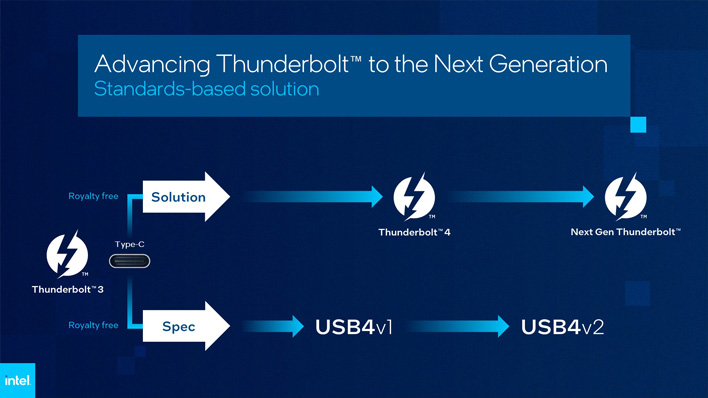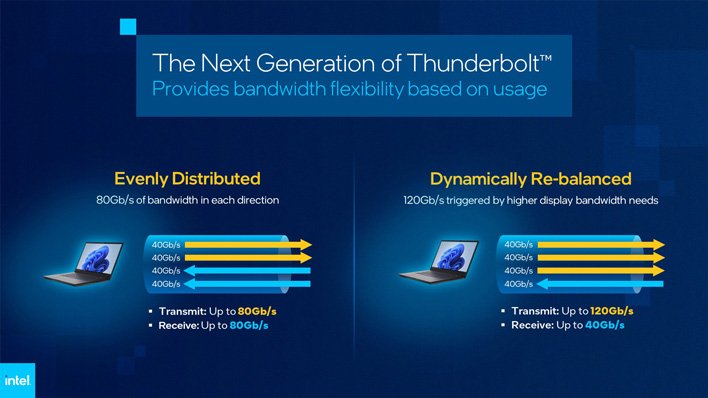Next-Gen Thunderbolt And USB4 v2 To Deliver Blistering Bandwidth Up To 120Gbps
USB4 v2 doubles the bandwidth of the original USB4 spec. USB4 v1 consists of four 20Gbps links which enable up to 40Gbps transfers bidirectionally when aggregated into pairs—two links transmitting and two links receiving. USB4 v2 bolsters these links to 40Gbps each to achieve its up to 80Gbps bidirectional rating.
It can achieve these speeds by using a new physical layer architecture which uses PAM3 signaling. USB-IF says that consumers will be able to use existing 40Gbps rated passive Type-C cables to achieve the new 80Gbps operation up to 1-meter in length. USB-IF has also defined new 80Gbps active Type-C cables for users who require longer cable runs.
So where does the 120Gbps bandwidth claim come in? The individual links are able to be rearranged dynamically into a 3+1 configuration. This allows USB4 v2 to transmit up to 120Gbps in one direction, but the tradeoff is receive throughput drops to 40Gbps. This capability is suitable for needs like connecting high resolution and refresh rate displays which only really care about sending high throughput traffic one way. On the display front, USB4 v2 is fully compatible with the DisplayPort 2.1 specification with a shared PHY.
USB4 v2 will arrive on devices with “USB 80Gbps” badging as per the new naming conventions. This does not mean it will appear that way for all devices, though. The USB 80Gbps badging requires devices to undergo a certification process, but the badging is not required. This means some cheaper cables and devices may still surface with alternative naming.
Intel says the next generation of Thunderbolt can be thought of as a solution for the USB4 spec. Next Gen Thunderbolt will be required to support its peak capabilities. In effect, while a USB4 port could describe capabilities spanning from 20Gbps to 80Gbps, a Next Gen Thunderbolt certified device must support both 80Gbps symmetrically and be capable of the 120Gbps asymmetric operation.
Like USB4 v2, the Next Gen Thunderbolt is royalty-free which should help with adoption. However, its certification process is required so some manufacturers may opt to stick with USB 80Gbps badging to save on cost if it opts to certify at all. Regardless, customers should look for the Next Gen Thunderbolt branding to ensure the best experience.
By the way, Next Gen Thunderbolt is only the working name while it is under development, and Intel has not yet disclosed what the final naming will be. It will likely show up as Thunderbolt 5, but Intel could elect to go with a more descriptive naming convention on the consumer-facing side as the USB-IF has.
With the USB4 v2 specification released, we can expect to start seeing devices on the market in the next year or so. Adoption of USB4 v1 has not exactly been quick, considering it was released in 2019. Intel says we can expect to know more about the next generation of Thunderbolt sometime in 2023.







